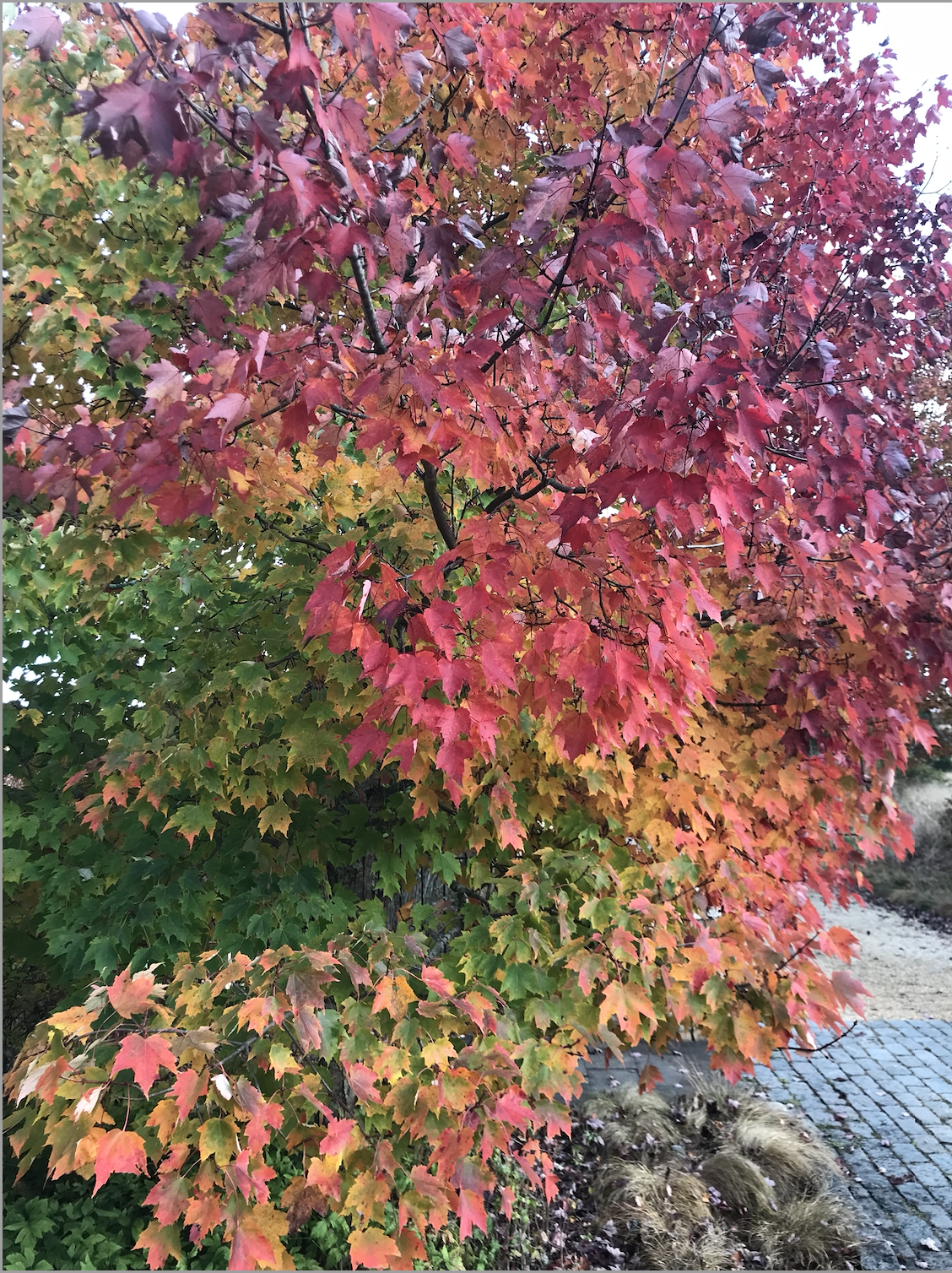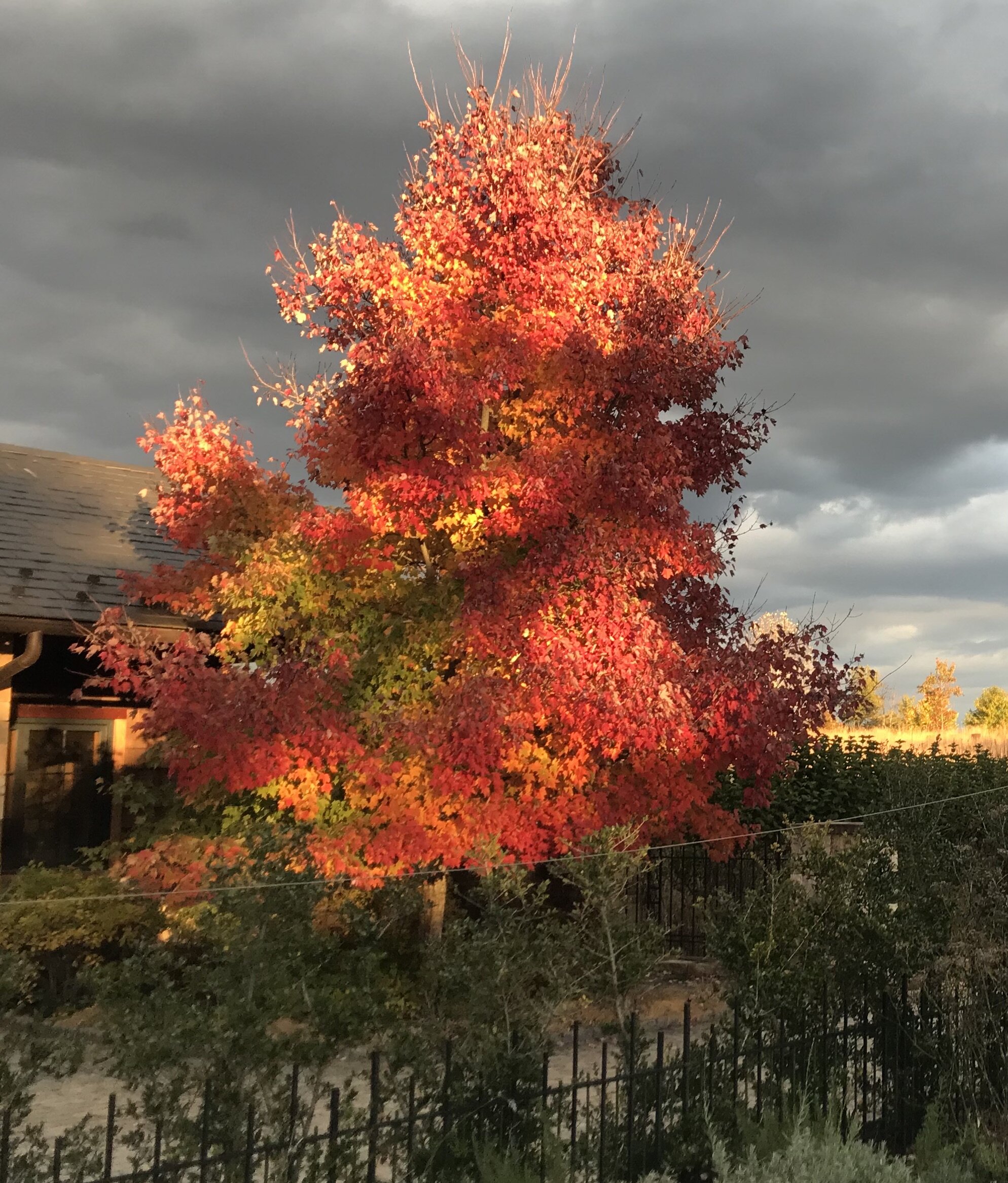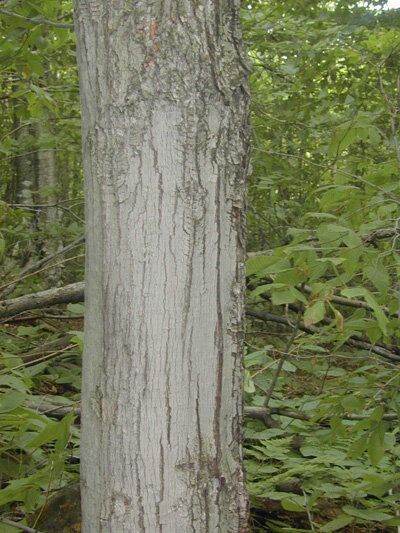Red Maple
Acer rubrum
A moderately fast-growing deciduous tree, the red maple is a member of the taxonomic family Sapindaceae, also commonly known as the Soapberries. A showstopper all year long, the red maple boasts a beautifully vibrant red fall foliage, while in the spring you’ll notice its red flowers and stems, hence its common and scientific name. Having a prolific native range, the red maple inhabits the entire eastern U.S, extending from Canada all the way south to Florida, and west to Texas.
General Description
Generally considered medium in size (40’-70’), red maples occasionally grow to be well over 100 feet tall when growing naturally in the forest. One of the most common species of tree in the deciduous forests, spotting this one can be easy whichever season you’re in. Having a smooth, pale-gray bark when young and darker raised plates of bark at maturity, it’s easier to ID these trees from their shiny-red stems and iconic red maple-shaped leaf (in the fall). Spring for a red maple means the production of beautiful clusters of small red flowers leading to the prolific production of fruits called samaras, the iconic seeds with two winged stems that helicopter their way down to the forest floor. Red maples are considered polygamo-dioecious, meaning they vary between being dioecious and monoecious, with the dioecious individuals having either male or female flowers on a single plant, while monoecious trees exhibit both sets of flowers on the same tree.
Habitat
The USDA hardiness zones for the red maples range from 3-9. This species has the widest tolerance to climatic conditions of all the maples. This tree prefers moist, acidic, well-drained soil but can tolerate alkaline and clay soil, as well as occasional flooding and drought. There are a few diseases and pests that may induce damage to a red maple, such as verticillium wilt (fungus), aphids, leafhoppers,leaf spot, and cankers.
Uses
Red maples are one of the most commonly planted trees in America, both for commercial and urban landscaping, as well as for the home. For landscaping purposes, it is a medium to large-sized shade tree with exquisite fall colors of red, orange, and sometimes yellow. It makes a spectacular specimen tree and will do well in full sun to part shade and in a variety of soil conditions. It can be planted alone in the lawn, on the edge of the woods, or in an urban setting as it is tolerant of pollution. Due to a shallow, flattened root-system, avoid planting this tree too close to a sidewalk or driveway. And remember, this tree gets tall, so try to avoid planting under power lines!
Red maple also has a variety of uses other than landscaping. The wood of the red maple is regarded as a fine wood for the construction of furniture, hardwood flooring, veneer, instruments, and boxes, among other things. The sap from this maple tree can be turned into syrup, although it is not as sweet as other saps due to reduced sugar content.
Of particular interest to wildlife, Acer rubrum is the primary host plant for the Rosy Maple Moth (Dryocampa rubicunda) and a favorable host plant for the Cecropia Moth (Hyalophora cecropia). Its flowers are also visited by native bees.
Interesting Information
While generally considered a medium-sized tree species, in 1997, a red maple was found in Great Smoky Mountain National Park that was 141’ tall and just over 7’ in diameter.
The red maple has a deep ethnobotanical history with Native Americans. The bark was used medicinally as a painkiller, and for hives and muscular aches.
Initially assumed to be a primarily wind-pollinated species, the red maple has since been shown to be visited by insect pollinators such as native bees, suggesting that there might be extensive insect pollination occurring as well.
From the buds, flowers, seeds, and leaves to the hollow cavities of older individuals, the red maple is a robust provider for the woodland fauna’s needs.
Works Cited
https://plants.usda.gov/plantguide/pdf/pg_acru.pdf
https://www.mortonarb.org/trees-plants/tree-plant-descriptions/red-maple
https://plants.sc.egov.usda.gov/core/profile?symbol=ACRU
Native Trees of the Southeast. Pg. (57-59)





